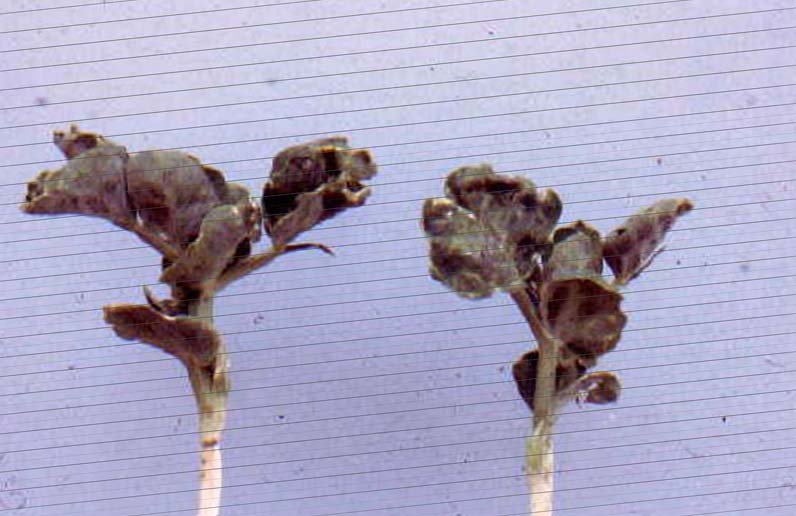 Full
FullGuide »

January 2025
Field thrips in peas & beans
In most seasons damage caused by thrips to newly emerging pea or field bean crops occurs to a greater or lesser degree. Attacks are more severe during periods of slow growth and on stony soils.
Thrips are tiny, narrow-bodied, black insects of the type known as “thunderflies”. Many generations of thrips are wingless and spend most of the year in the soil, feeding on a wide range of non-legume crops including Brassicas, linseed, and sugar beet. As peas or beans begin to emerge in the spring, thrips feed inside the tightly rolled leaves of the growing point. Because feeding causes damage to the leaf surface, young leaflets appear pale and slightly distorted and, if held to the light, small translucent markings are obvious. On beans, leaves may appear shiny and speckled with sooty black markings. The undersides of bean leaves develop a rusty brown discolouration. By carefully unfolding the leaflets of affected seedlings, thrips may be found.
In many situations, peas and beans can outgrow the initial attack, with no long-term effects on the crop. However, occasionally when the attack is severe, peas may develop multiple secondary shoots and develop as small bushy young plants. Bean leaves may die off completely and severely arrest the growth for a week or two. Where damage is noted in most years, then treatment can be justified.
Thrips in peas may be difficult to control as the insects feed inside the enclosed shoots. PGRO trials have shown that Hallmark with Zeon technology has given a useful and consistent reduction of leaf damage. The product is approved for use on all peas for weevil control. Early treatment is essential and where thrips damage is confirmed as the peas are just emerging, and before the leaves have expanded, a single spray should be applied as soon as possible.
In beans, the thrips feed on the leaf surface and are often more exposed. In this case, a contact insecticide applied for weevil control will provide adequate control of thrips. It is seldom necessary to treat winter field beans.
